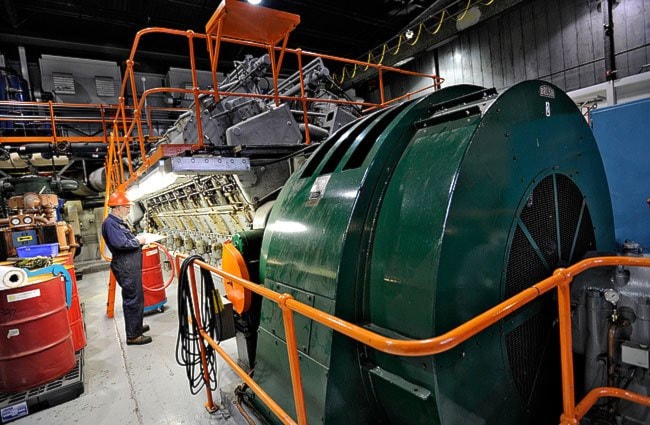The Yukon is rich in many things, but electricity is not one of them.
With an expanding population and a booming mining sector, the Yukon has developed an insatiable thirst for energy.
“We’re running out and need to find some options,” said Janet Patterson, spokesperson for the Yukon Energy Corporation. One of those options is liquefied natural gas or LNG.
This month it held a public meeting to explore that option further.
In the Yukon, three hydroelectric plants produce almost all of the territory’s power.
Only about two per cent of the territory’s power comes from diesel generators.
“Our goal is to get to a point where all our electricity needs are met through renewable energy,” said Patterson.
But getting to that point is easier said than done.
Building new power plants is an expensive and time-consuming venture. And time is not a luxury that the Yukon can afford.
Right now, the territory consumes more than 400 gigawatt hours of electricity a year.
Almost 50 gigawatts is used by the mining sector. By 2015 the territory’s mines are expected to need 237 gigawatt hours of electricity a year.
“For Yukon Energy, LNG is a perfect fit,” said Alan Hatfield, the vice-president of Braemar Wavespec, who made a presentation touting the benefits of liquefied natural gas.
According to Hatfield, the benefits are legion.
Liquefied natural gas is basically pure methane cooled to a temperature - 162 C. At that temperature, methane turns from a gas to a liquid, reducing in volume significantly - a ratio of 1:621.
LNG is a much safer fuel than any other hydrocarbon, said Hatfield.
If it spills on the ground, it boils off and turns back into a gas. The gas is odourless, colourless and nontoxic, he said.
Compared to gasoline, it’s also much less flammable. The ignition point of methane is 537 C . Gasoline ignites at 232 C.
And even when it does ignite, it’s much less powerful.
“It’s a lazy flame,” said Hatfield. “More like a candle than what you would get from gasoline.”
Also in its liquefied form, LNG doesn’t burn.
Hatfield saw this demonstrated in dramatic fashion when he first started working with LNG more than 30 years ago.
“There was this three-metre-by-three-metre pool of LNG and a guy with a road flare attached to a pole,” he said.
When the flare was dipped into the liquid methane, Hatfield expected an explosion.
“I thought this guy was crazy,” he said.
Instead the pool of LNG put the flare out.
LNG is not only safer than diesel or gasoline, it’s also much more environmentally friendly, said Hatfield.
When burned, it releases only half the carbon dioxide, 100 per cent less sulphur dioxide, 97 per cent less nitrogen oxides and there is an 80 per cent reduction in other volatile organic hydrocarbons.
It’s also cheaper, he said. At today’s prices, natural gas is about half the price of diesel.
Also it’s believed there is a lot of it in the Yukon.
Some six trillion cubic feet of natural gas is believed to be sitting beneath Eagle Plains (see story on page 3).
“We see it as a transitional fuel,” said Patterson.
It’s a cleaner, abundant, cheaper alternative to diesel that could be up and running in a relatively short period of time, she said.
Changing over from diesel to LNG could take as little as two years although he cautioned that regulatory hurdles could slow things down, said Hatfield.
“It’s a proven technology, but it’s new to the Yukon,” he said.
The other big benefit to LNG is that it’s flexible, said Patterson.
While the Yukon may soon need a lot more electricity to meet the needs of the mining sector, those mines don’t last forever and a dip in commodity prices could significantly reduce the need for electricity overnight.
Because demand is so volatile and the Yukon’s grid is not connected to B.C., large-scale hydro projects just don’t make a lot of sense right now, said Patterson.
Yukon Energy is in the process of updating its 20-year plan. As part of that update, it’s reaching out to the public with presentations such as the one on LNG.
“All the input from the public is being taken into account when we prepare this update,” said Patterson.
That’s a far cry from how Yukon Energy has done these updates in the past.
“We used to do it ourselves and then present it to the public,” she said. “I think this way, in the end, we’ll end up with a better product.”
Contact Josh Kerr at joshk@yukon-news.com
